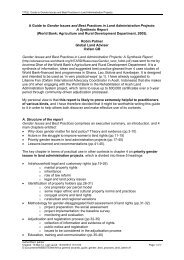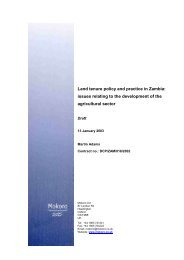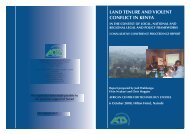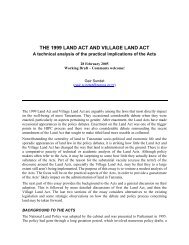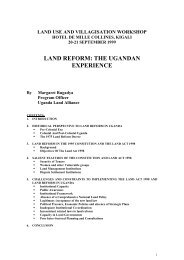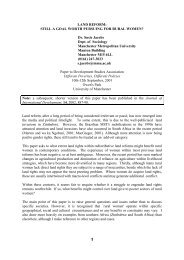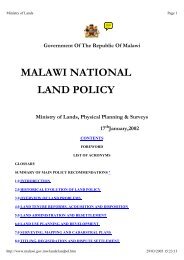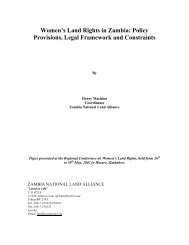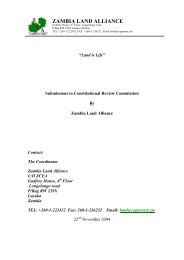Download - Mokoro
Download - Mokoro
Download - Mokoro
- No tags were found...
Create successful ePaper yourself
Turn your PDF publications into a flip-book with our unique Google optimized e-Paper software.
18development strategies. Provincial growth and development plans outline the importanceof the agricultural sector, but do not indicate how agricultural land should be useddifferently in the future.At a national level, the Land Use Management Bill of 2006, in draft since 2001, has beenpresented to parliament and is currently under debate. Zoning is the key instrument usedby governments to regulate land use but, once the Land Use Management Bill ispromulgated, zoning will be fully devolved to municipalities which are obligated todevelop “land use schemes” to regulate how land is used and managed. Although ittakes precedence over municipal by-laws and any national legislation impacting on landuse regulation, this Bill is framework legislation which devolves decision-making, withincertain parameters, to municipalities. The Bill provides intergovernmental support for thedevelopment, alignment and coordination of land use and spatial development plans ofmunicipalities, and for dispute resolution between municipalities and local communitiesregarding land development and land use regulation. This Bill sets in place ‘directiveprinciples’ for land development and land use management, including among others thebest possible use of available land-related resources, promotion of compact humansettlements rather than low-density urban sprawl, appropriate mixed land use, and thepreservation of agricultural land and in particular prime and unique agricultural land foragricultural purposes (RSA 2006:11-12).Local levelInternationally, there has been a thrust towards decentralisation andparticipation in land use planning, in order to close the gap between thosedrawing up plans, those who will implement them, and those who are the“subjects” of these plans (Dalal-Clayton 2003:45).Over the past year, area-based planning (ABP) has been adopted as a new approach toplanning land reform by the DLA, in which plans are to be drawn up for each district inthe country, specifying which land should be acquired for redistribution, what kinds offarming and other activities are to be supported, and for whom. These plans are to bealigned with spatial development plans at municipal level, and to form part of integrateddevelopment plans (IDPs). For each district, consultants have or are to be appointed todevelop these plans, including a situational analysis, a vision and strategy, identificationof projects, integration and prioritisation of plans, and approval.ABP involves evaluating land and related resources (what is it good for?) but alsorequires the determination of land use (how should it be used?) – a somewhat differentquestion that requires consideration not only of physical resources, but of economicobjectives. This is far from being a technical exercise; it represents a political choice thatis often based on incomplete information about the possible economic and socialoutcomes of various possible uses.The most significant precursor to ABP was the Area Land Reform Initiative (ALRI) was ajoint initiative of Makhado local municipality in Vhembe district, Limpopo, and NkuziDevelopment Association, aimed at determining a new vision for agriculture in the area,given the density of land claims and the structural contrast of large-scale and capitalintensivecommercial farming, on the one hand, and densely settled and impoverishedPolicy Options for Land and Agrarian ReformProgramme for Land and Agrarian Studies, University of the Western Cape




